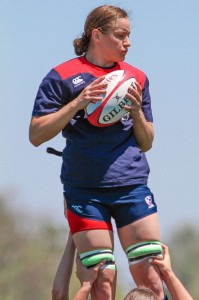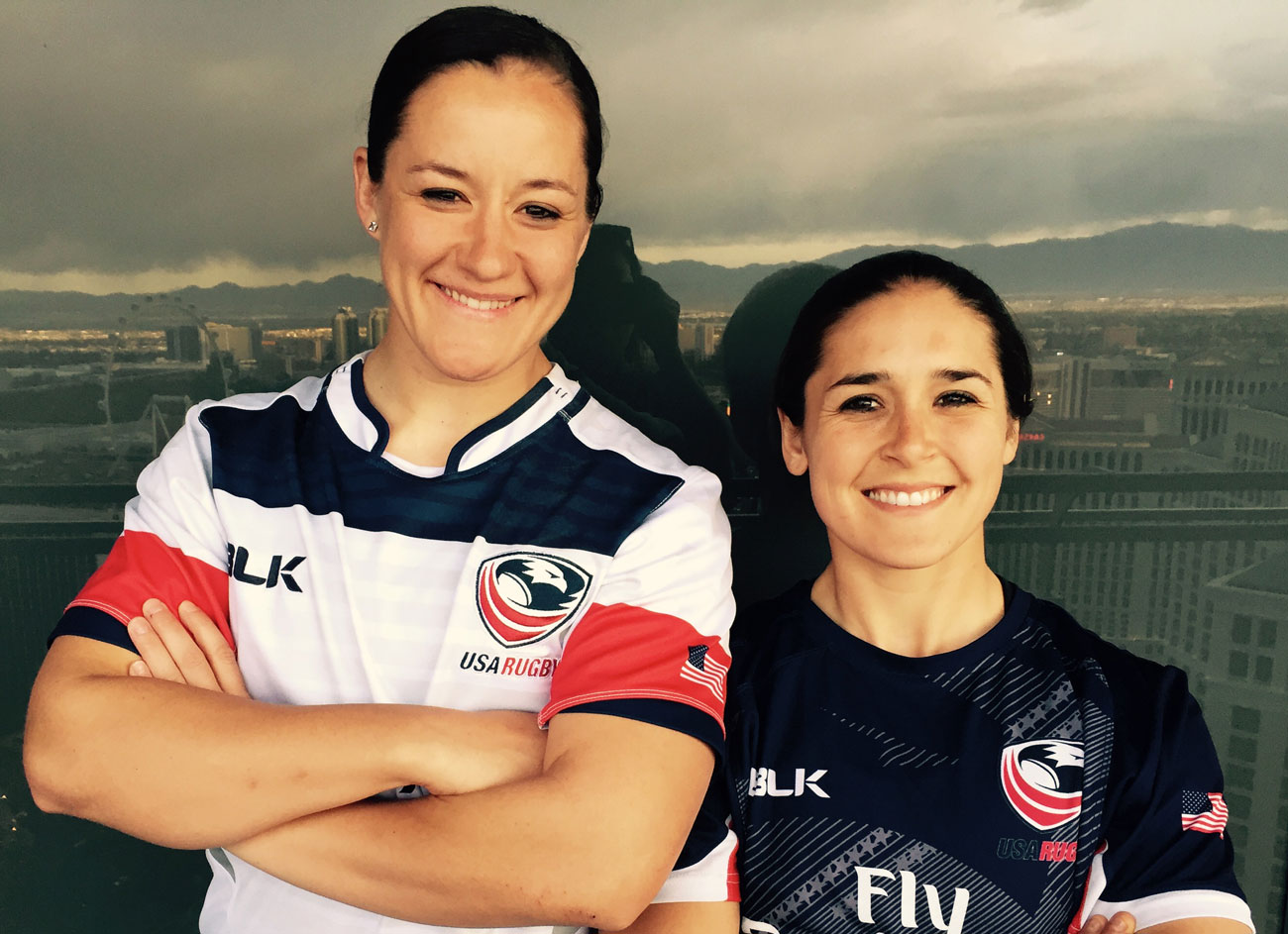WASHINGTON — The staff members at Scion Restaurant in Washington’s Dupont Circle are in better shape than your average servers, handling cocktail napkins and liquor bottles with surprising athleticism and coordination. That’s because most of them are female rugby players.
Long-time rugby convert Joanne Liu opened the restaurant in 2009.
In the mid-1990s, Liu turned up at Boston College where she stumbled across a group of cool girls and good-looking guys. It was there she discovered rugby, and was immediately sold on the community, the passion and the game.
“You showed up at college: cute boys, fun girls – done – this is the game I’m playing. I’m gonna learn this game. That’s how I learned it,” Liu said. “We all learned in college.”
College has been the traditional breeding ground for both men’s and women’s rugby in the U.S. Since 2002, an increasing number of colleges, including Harvard, Dartmouth, Brown and West Point, have added women’s rugby as a varsity-level sport. This single word – “varsity” – means more funding, more resources, more training and more scholarships.
Women’s rugby is about to make its entrance on a big stage in Rio de Janeiro. The XXXI Olympiad will feature women’s teams for the first time, and ruggers are hopeful the Olympic tag will give them the recognition they need to grow the game beyond gradual expansion at universities and high schools.
“The fact that high school girls can now train and receive a college scholarship to play the sport of rugby, means high school parents are willing to invest time, energy and money in encouraging their high school girls to play this game,” said Liu, who is also the U.S. Naval Academy’s women’s head coach.
Moving the game’s entry point from college to high school is vital to early learning of the basics needed to play rugby at a high level. Athletes introduced to rugby in secondary school, rather than stumbling across a marquee while looking for the college wrestling team, will be more invested in the sport.
But then what? For women who finish college and still have competitive aspirations, it’s hard to find the financial incentive to continue playing or coaching. Despite its upcoming Olympic debut, and an increase from 200,000 to 1.7 million players worldwide, female rugby players are blocked after college because there’s so few opportunities or time to develop their game when they enter the work force.
“There was absolutely no way that I could continue playing at the club level,” Liu continued. “I love the game, but I had to make a conscious decision to go with career or continue playing.”
And so Liu stopped playing, but didn’t leave the sideline. She founded, and is the CEO of Washington-based Scion Rugby, now one of USA Rugby’s national development academies. The club provides opportunities for young female ruggers to develop their skills, and elite players to keep going after they graduate.
While a pro league for the men was established last month, Scion Rugby is one of the rare opportunities for elite female players to stay in the game and also connect with high schoolers and collegiate athletes looking for inspiration.
Which explains Scion Restaurant’s staff roster. Since opening in 2009, Liu has employed more than 30 rugby players.
While Americans are throwing money at other sports, like soccer, hockey and fast-pitch softball, when you ask someone for 20 bucks for rugby they immediately back away, Liu said. The sport’s perceived marginal status and lack of broad knowledge of the game means parents don’t always understand the value of exposing their kids to experienced coaches and players.
“As you want to get people better, there is a cost associated with that, and there should be,” Liu added. “Why shouldn’t (Stacey) Bridges get paid $50 to coach a bunch of high schoolers? We’re not asking for a ton of money, but she has to make all of these sacrifices…”
Throughout her career, USA Eagle Stacey Bridges has spent much of her time conducting youth outreach at high schools. She has taught rugby in PE classes, led six-week training camps, and guest-coached at schools around the country – all efforts to show girls there can be opportunities to play, develop and travel. In January, Bridges moved to DC as Scion Rugby Academy’s operations manager, coordinating all of their youth outreach to help grow the game.
More than 30,000 American women are challenging the outdated stereotypes that have shoved them away from contact sports like rugby.
“Growing up in the U.S., girls are kind of pushed to certain sports that are non-contact,” the 15s national representative said. “I wanted to play football when I was in seventh grade, but you know, ‘it’s a boy’s thing,’ or you know, ‘girls don’t play football’.”

USA player Stacey Bridges successfully catches the ball in a lineout, one of two methods to restart play after the ball has gone into touch. (Photo courtesy of Stacey Bridges.)
When Bridges discovered rugby her freshman year at Texas A&M, she got the chance to exercise and display her physicality and strategic thinking, and to experience the rush and the teamwork of a contact sport played as rigorously as the men play it.
The ball is the same size for men and women; the field doesn’t change; and tackling, rucking and mauling laws remain identical for both genders.
For many sportswomen, rugby epitomizes equality, said USA women’s sevens coach Richie Walker. It’s a game of ceaseless action, contact, athleticism, endurance and technique that does away with the protective gear that American football fans have become accustomed to.
This August, American men and women will compete against some of rugby’s enduring titans, including New Zealand, Great Britain and Australia. After nearly a century missing, a scaled-down version of rugby will appear at the 2016 Summer Olympics, offering unprecedented international exposure and an opportunity to catapult the game’s popularity in the United States. Rugby sevens is the perfect game for the American ADD audience, Liu and Walker agreed.
“It’s literally seven minutes of big hits, big tackles, lots of running, super exciting. Commercial break, again. Done,” Liu said.
“This is a massive nation,” said Walker, originally from New Zealand. “Anything that you put ‘Olympic’ in front of, or around, this whole country’s gonna support it.”
USA Rugby has already anticipated the potential for the game to skyrocket.
In 2014 the organization established the USA Women’s High School All-Americans teams, giving young women an incentive to develop their skills and make a greater commitment to the game.
Rugby is already a hugely popular international game. And female players and coaches are certain USA Rugby will soon take advantage of the guaranteed Olympic exposure to provide more opportunities, and cultivate the sport among a younger generation of American women still in high school.
“It’s easy to follow. It’s exciting to watch and support and play. There are iterations of it that can include kids, women, men, old people, young people, whatever you want. It’s all-inclusive. It breeds passion and community,” Liu said. “And all you need is a piece of grass and a ball.”

